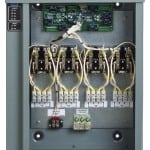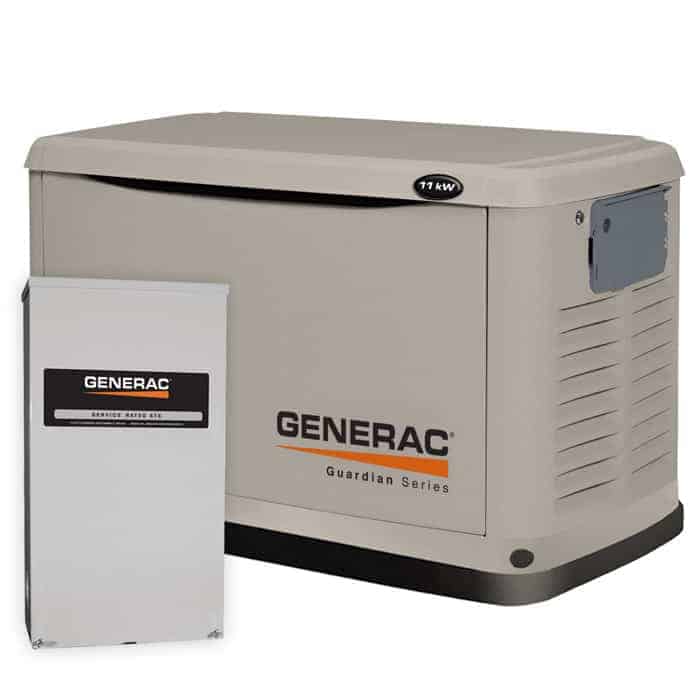A home generator unit, whether a permanently-connected standby generator or a temporarily-connected portable unit, is only capable of supplying a limited amount of power. After capacity is reached, the generator is unable to meet any additional demand. Adding demand once capacity is reached will usually cause the generator’s circuit breaker to trip. Load management balances demand against generator capacity. In the simplest sense, this means operating one device while preventing another device from running and competing for the power.
High Demand Appliances
 The transfer switch that controls power from a generator supplies both 120-volt and 240-volt devices. The 120-volt branch circuits in a home carries a maximum of 15 or 20 amperes, depending on the circuit. Devices that require larger amounts of electrical power run on 240 volts. Air conditioners, hot water heaters, electric ranges, some dishwashers and baseboard heaters are just some of the possible 240-volt, high-demand appliances that a generator might power.
The transfer switch that controls power from a generator supplies both 120-volt and 240-volt devices. The 120-volt branch circuits in a home carries a maximum of 15 or 20 amperes, depending on the circuit. Devices that require larger amounts of electrical power run on 240 volts. Air conditioners, hot water heaters, electric ranges, some dishwashers and baseboard heaters are just some of the possible 240-volt, high-demand appliances that a generator might power.
It makes sense for some homes to have two air conditioners, and each might require 7000 watts or more. A 20 kilowatt standby generator could power two such air conditioners, but both units could not start at the same time since they draw much more than 7000 watts during startup.
Load Management Principles
Devices that use electric motors have a high inrush current during startup which quickly tapers off. Two central air conditioners could not start at once on a 20 kilowatt generator, but one can start and after the inrush current subsides, the second air conditioner can start. One way to manage the load on a generator is to prevent two high demand motors from starting at the same time.
Some loads have a constant power requirement, such as an electric water heater, a baseboard heater, or an electric range. If two of these loads will draw more power than the generator can supply, then only one load can run at a time―perhaps this means turning off the hot water heater while the electric range cooks dinner, for example.
Load shedding is a way of managing power to keep vital devices running in a power emergency. A number of low demand circuits receive power as required. When high demand devices attempt to run, they only receive power if the generator has the capacity to spare. This type of management is accomplished with a digital controller and digital load modules.
DLM Modules
Digital Load Management (DLM) modules control appliances that require large amounts of power―two air conditioners for instance. Each load is assigned a priority and is wired to its own module.
The relay inside the DLM is an electric switch installed between the automatic transfer switch circuit breaker and the device the DLM controls. The transfer switch turns the device on and off by activating and deactivating the module.
The priority of the devices assigned to the modules determines if they are allowed to run. If turning on the third priority load will overload the generator, the device is prevented from running. When generator capacity becomes available, such as a priority one device turning off, then the controller allows a lower priority device to operate.
Digital Controllers

Compatible with Kohler generator sets equipped with the RDC2 or DC2 controllers, inluding the 14RESA/RESAL and 20RESA/RESAL.
A load shedding digital controller turns off all managed loads when utility power is interrupted. After specific length of time, the load given first priority is allowed to start. Once the load starts and is operating, additional loads are then added one at a time unless the total load nears generator capacity. This could mean the electric range is never given priority while both air conditioners run, and if the electric hot water heater is last in line for power, it may not run if the electric range is cooking dinner.
If the priority three load is running, and first priority air conditioner is needed, the priority three load is shut off and first priority load is turned on.
















